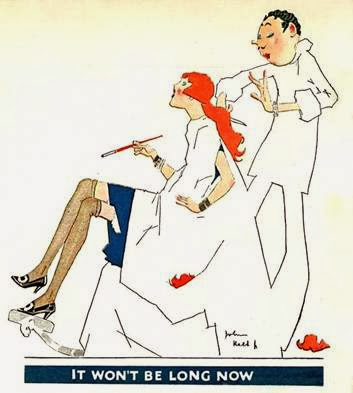The Geneva
Why
is a flapper? [sic] Who knows? Well, why is she called a flapper? Now,
that's different. In . . . a story
published 12 years ago, Harry Leon Wilson . . . called the little dumpling girl
to whom ‘Our Hero, Bunker Bean,’ found himself married, the ‘flapper.’ . . . When asked recently why he called his
. . . girl a flapper, Mr. Wilson said he didn't exactly know. ‘I heard the term first in England
Or,
Yes,
many times we've wondered, why they call the young ladies flappers. In the spring time, summer time, and fall
there does not seem much reason for giving them this cognomen. . . . Then we saw how they wore their galoshes
[unbuckled and flapping]” (January 21, 1922).
Or,
Flappers Resembled Ducklings
The
term "flapper," as applied to young girls of a certain type, is not
modern, as most people suppose, but is really close on two centuries old. Early in the seventeen hundreds growing-up
girls were first called "flappers" from a fancied resemblance to the
young ducks, neither fledging nor grown-up, but dashing about with a good deal
of noise and flapping of wings” (July 28, 1922).
 |
Singer and dancer Josephine Baker in a very
flapper-ish ensemble.
|
Wikipedia, however, suggests that
these theories were actually mistaken.
According to the article on Wikipedia, flapper was actually a slang word
in England England and the United States
By
1920, the term had taken on the meaning we associate with it today. As
one critic put it, "the social butterfly type… the frivolous, scantily-clad, jazzing
flapper, irresponsible and undisciplined, to whom a dance, a new hat, or a man
with a car, were of more importance than the fate of nations” (Wikipedia article on the flapper). Clearly, not all
women in the 1920s were flappers. The
flapper followed the extremes of fashion and flouted convention. For example, Daisy Buchanan in The Great Gatsby was a flapper.
 |
| Boyshform elastic undergarment ad. |
The Daily Times talked a lot about flappers - most of the time, disparagingly. The paper recounts a story from
In June 1922, the Times reported:
Barbershop,
Once Haven for Man, Now Catering to Flapper Patrons
.
. . investigation by a Times reporter has disclosed that . . . the modern
flapper has invaded what was once . . .
a sanctuary for the male of the species alone – the barbershop. And the shops are cleaning house and
installing fancy window curtains in her honor.
She walks right in, so Geneva
The Times sometimes, though, tried to be even-handed: “THE
POOR FLAPPER . . . gets credit—or is it dis-credit—-for a lot of things for
which she really is not to blame. To be
true [sic] she allows only the lower buckle of her galoshes to have any
responsibility, but she didn't originate the style. It originated at Cornell” [February 28,
1922].
 |
And sometimes, the paper reported
other voices in the debate:
“Bishop
Thomas F. Gailor . . . Says Woman of
Today Is No Different from the Woman of Grandmother’s Day
Though the debate continued, by the
mid-1930s flapper was outmoded slang. It
may be that in the depths of the Great Depression, other worries took precedence.
Do you
enjoy this 1920s moment? The Geneva
Historical Society is hosting several workshops and programs in December and
January about the 1920s all leading up to our Speakeasy Party at Belhurst on Friday,
January 17. For more information about
the Speakeasy or related programs, call us at 789-5151 or go to www.genevahistoricalsociety.com.
No comments:
Post a Comment